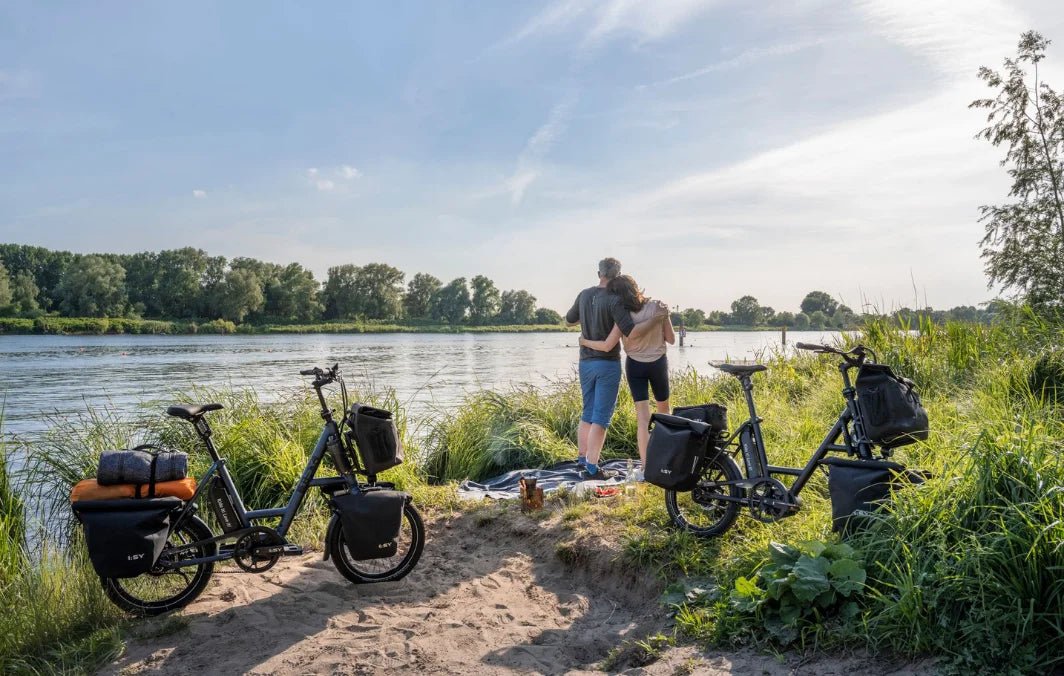Besides of loads of fun, e Bikes and e Cargo Bikes are a great solution to 1 of the most pressing world problems. Quick read on some of the amazing benefits on ebikes
Air pollution & emmissions
The U.S. Census estimates that about half of all Americans live within five miles of their workplace. If everyone in the world who works less than 5 miles from home cycled instead of driving to work one day a week, it would reduce greenhouse-gas emissions by 5 million tons a year. That’s the equivalent of 1 million people getting rid of their cars. And it would save over 24 billion gallons of gas.
More CO2 is emitted by the United States’ transportation sector than any other nation’s entire economy, except for China.
Motor vehicles produce more than 30% of US carbon dioxide emissions, more than 80% of carbon monoxide, and about half of the nation’s nitrogen oxide emissions each year.
60% of the pollutants created from motorized transportation are produced during the first few minutes of the ride. Because this is when your car is working the most inefficiently, these “warm up” trips driving a shorter distance produce more air pollutants than driving on a longer trip. Short trips are the ones that can easily be replaced by a bike ride.
14,000 pounds of carbon are produced in the manufacture of each motor vehicle. By comparison, a graduate student at MIT recently estimated that manufacturing an average bicycle results in the emission of approximately 530 pounds of greenhouse gases. Given a typical US diet, you would have to ride your bike around 400 miles to make up for the bike’s initial carbon footprint. If you only rode your brand new bicycle 2 miles a day for 5 days a week, you’d be carbon neutral in less than a year. If you’re riding a used rather than new bike, your carbon footprint drops even more, because you’re reusing existing materials instead of generating more production emissions. The longer you use your bike, the better for the planet.
Riding a bike also reduces traffic congestion. Idling cars are bad for the environment, so less cars on the road means a healthier community.
Someone riding a bike can go 960 miles on the amount of energy that goes into moving a car 20 miles.
Emissions don’t only affect the air. Airborne-pollutants fall to the ground with precipitation, which pollutes our groundwater and our farmland too.
Habitat & Sprawl
Bicycles reduce the need for clearing land for parking lots. For every one car parking space, 6-15 bikes can fit easily. The asphalt, roadway tars and other chemicals poured to make parking lots also release pollutants into the air and groundwater.
The removal of trees and complementary vegetation for parking spaces eliminates vital air cleaners that help reduce the quantity of carbon dioxide in the air.
Paved surfaces increase the “heat island effect” – meaning built areas are several degrees hotter than surrounding rural areas, which translates to increased energy demand (especially in warm months), and greater energy-related greenhouse gas emissions. Because bicycle parking requires little space, bikes help minimize the heat island effect and also preserve habitats.
When driving a car, people tend to use highways and drive greater distances for their errands. With a bicycle, people are more likely to keep things local and support the businesses nearby. Studies show that local businesses help to sustain vibrant, compact, and walkable town centers, which in turn reduces sprawl, habitat loss, and water and air pollution.
As of 2010, there were 800 million car parking spaces in the U.S., totaling 160 billion square feet of concrete and asphalt.
Bicycles are great for helping to protect wildlife and their habitats. Riding a bike is much quieter than driving a car, which means a reduction noise pollution. And riding a bike decreases road kill.
Deforesting & Mining
Because bikes use much less rubber and lubricants than other forms of transportation like cars and buses, they can help reduce deforestation. Each year the huge amount of rubber and lubricants used in cars clears thousands and thousands of acres of forests for rubber plantations.
Metals used to produce vehicles must often be mined from the earth, which can devastate landscapes and cause more deforestation. Pollution also enters the atmosphere through the extraction of these raw materials.
Contamination of water sources is one of the most serious results of mining. Even small-scale mining can leave landscapes barren of vegetation for years, contributing to global warming by removing trees that clean the atmosphere.
Costs
A typical asphalt road in a city like Missoula needs to be resurfaced every 7 years or so because of all the heavy vehicle wear and tear. Bikes damage roads far less than cars do. A heavy bicycle weighs around 30 pounds, just under 1 percent of the weight of a Toyota Prius and less than 0.4 percent of the weight of a Hummer H2. More biking means less of your taxes are going towards fixing the roads.
Not only is maintaining roads expensive, but building new parking lots to accommodate all the traffic is extremely costly, too. The estimated cost of constructing one parking space in a paved lot is $2,200. And one parking space in a parking garage at $12,500. Yet a bike rack that can hold two bicycles may only cost $100.
The AAA estimates that it costs $8,876 per year to own a car.
